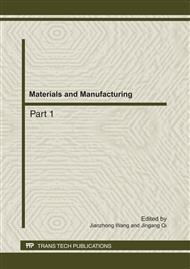p.1167
p.1171
p.1178
p.1182
p.1186
p.1190
p.1194
p.1198
p.1203
Vehicle Engineering Application Study on TSF Var Compensation Method for Electric Locomotive of Electrified Railway
Abstract:
The application of electric power, which acts as a pillar energy and economic artery in modern society, is one of the most important symbols of the level of development and comprehensive national power of a country. Var is a crucial factor for the design and operation of AC power systems, and is closely bound up with the safety, stabilization, and economical operation of power systems. With the development of electrified railway, developing the var compensation strategy vigorously has important senses in theory and practice. In this article, synthetically considering technique and economic leval of power systems in our country, parameters design and verification and specific engineering application of TSF var compensation method are presented. This method is a preferable one for resolving undesirable effect on power systems of electrified railway, especially having dynamic and real time characteristics of var compensation.
Info:
Periodical:
Pages:
1186-1189
Citation:
Online since:
July 2011
Authors:
Keywords:
Price:
Сopyright:
© 2011 Trans Tech Publications Ltd. All Rights Reserved
Share:
Citation:


